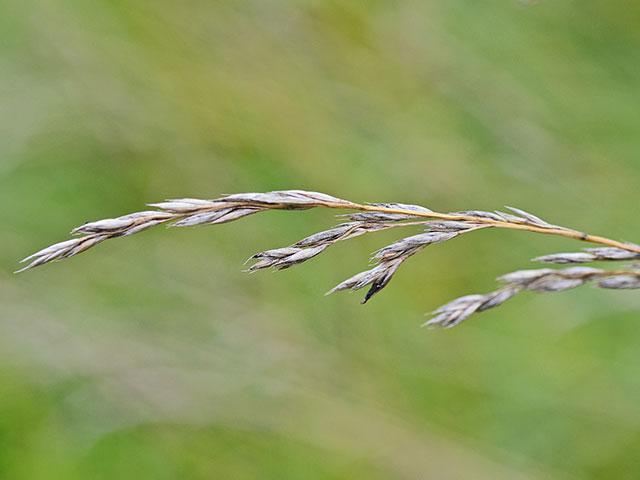Three Toxicosis Tips
Tall Fescue's Benefits Maximized by Managing Seedheads Early
As tall fescue starts to go to seed, forage specialists remind cattle producers to cut back those seedheads to reduce toxic endophytes in the forage. Toxicosis is common in many areas and can create herd health issues and reduce profits.
University of Missouri forage specialist Craig Roberts said that in his state, seedheads usually emerge mid-May. They contain five times more ergovaline than fescue leaves and have little nutritive value.
"In early summer, seedheads can also become infected with ergot, a highly toxic fungus that grows on the seed," he added. "Ergot infects most grasses and grains, not just tall fescue."
P[L1] D[0x0] M[300x250] OOP[F] ADUNIT[] T[]
Roberts reported that fescue toxicosis costs Missouri's beef industry more than $160 million annually in reductions in these key areas: weaning weights, conception rates, daily gains and milk production. Cattle suffering from toxicosis run high body temperatures and respiration rates, have reduced blood flow, and can even have lameness and loss of hooves.
KEEP FESCUE FROM GOING TO SEED
1. BALING. There are several methods to remove or avoid seedheads. One good option, especially with the price of hay today, is baling tall fescue before those seedheads form. Early hay production, noted Roberts, lets plants rebound and produce new leaf growth. And if there are toxins present, the longer the fescue is stored, the more toxins are reduced. Roberts said in an earlier report that one of the best ways to store fescue forage and reduce toxins in endophyte-infected tall fescue is by making hay out of it, and then possibly ammoniating it. Many of the ergot alkaloid dissipate during drying and can be cut in half by feeding time during the winter. Ammoniation can reduce the numbers even further. Roberts added that once ergovaline in tall fescue hits 250 ppb, livestock producers can begin to see problems with toxicosis.
2. CLIPPING OR EARLY GRAZING. Once there's a heavy growth of seedheads in tall fescue, clipping is a proven way to reduce toxin loads in the forage. Clipping allows grasses to stay in a vegetative, leafy state longer and results in grasses that are higher in nutrition and digestibility.
But it can also be expensive. Try to minimize the cost of this by limiting fertilization in the fall, particularly nitrogen, which can help reduce seedhead production. If you're early enough, you can also let the cattle do the work by turning them out to graze the early growth. Just don't graze lower than 4 to 6 inches.
3. CHEMICAL MANAGEMENT. Chemical control of seedhead emergence in tall fescue doesn't cure or eliminate fescue toxicosis. But by suppressing seedhead growth, which is where the toxic endophyte is most highly concentrated, toxin loads in cattle can be reduced, while nutrition is maintained at high, vegetative levels, allowing cattle performance to improve. To see how this approach works, check out this archived DTN article: https://www.dtnpf.com/….
Victoria Myers can be reached at vicki.myers@dtn.com
Follow her on Twitter @myersPF
(c) Copyright 2023 DTN, LLC. All rights reserved.






